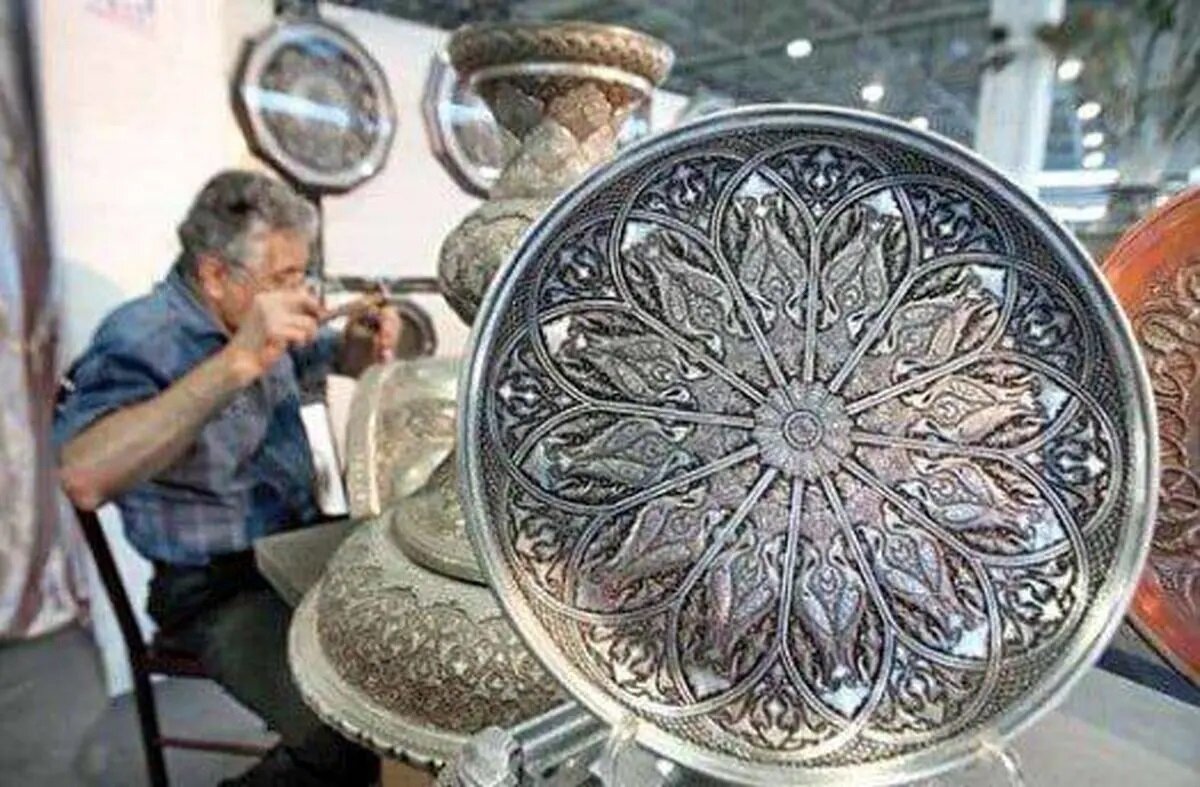Toreutics: a glimpse into art of metalworking in Iran

TEHRAN - Toreutics, the intricate art of decorative metalworking, holds a revered place in Iranian handicrafts and artistic heritage.
Though the precise origins of toreutics remain unclear, archaeologists and art historians trace its roots back to the Scythians or Sakas, nomadic Iranians from the pre-Achaemenid era.
The art of toreutics evolved from basic carvings on stone and mountain surfaces to the sophisticated techniques of engraving and metal decoration that define it today.
The process of toreutics
Toreutics involves the adornment of metal objects, crafted from gold, silver, copper, brass, or steel, with exquisite patterns and images.
Artists use specialized tools such as burins and hammers to engrave or hammer designs into the surface. Copper is particularly favored for its softness and malleability, making it a versatile medium for creating detailed and enduring works of art.
Modern practitioners prepare the metal surface by applying a tar and plaster solution to its underside. This layer reduces noise and minimizes the risk of damaging the metal during the engraving process. Once the surface is prepared, the artist sketches the desired pattern onto the metal and selects an appropriate burin.
Hammering or pressing the tool onto the surface, the artist creates intricate grooves and textures, varying the intensity of the strikes to achieve depth and precision.
Styles and symbolism
The motifs and symbols in toreutics reflect the ideological, cultural, and social dynamics of their time, undergoing historical evolution alongside Iranian society.
The craft incorporates diverse styles, including relief, mid-relief, engraving, and latticework. Two prominent regional styles dominate Iranian toreutics: the Isfahan style and the Tabriz style.
The Isfahan style is characterized by the use of hammering hits to engrave designs, resulting in deeper grooves. This method produces bold and striking patterns.
In the Tabriz style, relies on the motion and pressure of the wrist, leading to shallower and more delicate designs. The Tabriz burin creates fine, intricate details, offering a contrasting aesthetic to the Isfahan approach.
Cultural significance
Toreutics’ durability and aesthetic appeal have ensured its place as a treasured art form, with its products surviving across generations.
From royal palaces to historical monuments, the art form embodies Iran’s rich artistic and cultural traditions.
Today, Iranian craftsmen continue to refine the techniques of their ancestors, blending innovation with timeless artistry to create masterpieces that honor the legacy of this ancient craft.
AM
